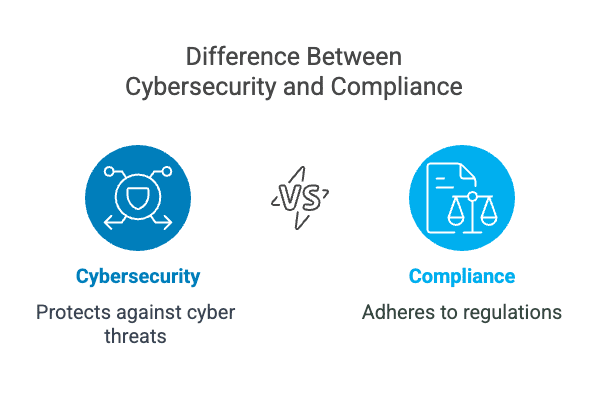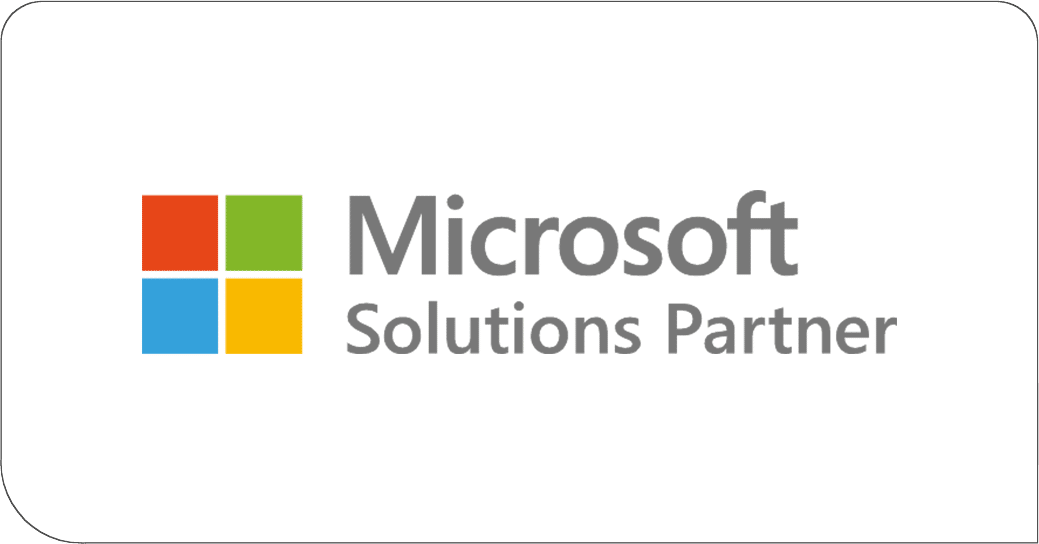When it comes to regulatory compliance, the stakes are high, with stringent penalties for lapses that can cost more than monetary fines. Reputational damage, loss of customer trust, and even lawsuits threaten businesses that fail to comply with industry standards – and ignorance is never an excuse.
So, how do you know that you’re adhering to regulations? In fact, how do you even know which regulatory rules or data privacy laws your business needs to comply with? Once, this would have meant tediously poring over documents and laboriously writing up manual reports – but technology has evolved to support and even automate these tasks.
With the right technology, tools, and cybersecurity measures in place, you can ensure your business is adhering to all regulations and industry standards, at all times.
The Difference Between Cybersecurity and Compliance
While their purposes may be related, cybersecurity and compliance are distinct concepts that require separate approaches. Cybersecurity focuses on protecting information and systems from cyber threats and breaches, employing a range of technical and administrative controls to safeguard data integrity, confidentiality, and availability.
Compliance, on the other hand, encompasses adhering to a set of predefined rules, standards, or laws set forth by regulatory bodies or industry organizations, such as the Health Insurance Portability and Accountability Act (HIPAA). These rules may include specific cybersecurity measures, but they also extend to other areas such as privacy protocols, operational procedures, and governance practices.
This means that achieving a high level of cybersecurity does not automatically equate to regulatory compliance. These laws require more from businesses than simply implementing specific security controls; they must document processes, regular audits, and ensure continuous monitoring and reporting.
Conversely, complying with a particular regulation does not guarantee immunity against all cyber threats, as certain standards may not cover every potential security risk.

The Importance of Adhering to Regulations
The ramifications of non-compliance extend beyond hefty fines and legal battles – they can inflict lasting damage on a company’s reputation, eroding customer trust, or even leading to a loss of business. On the other side, adherence to regulations is often seen as a baseline for operational excellence, showcasing a business’s commitment to customer privacy and overall security.
This commitment can translate into a competitive edge in an increasingly conscientious market where clients and partners prioritize doing business with compliant, trustworthy entities. In essence, a serious approach to regulatory compliance mitigates risks and can unlock opportunities for growth, and strengthen stakeholder relationships.
Maintaining Compliance: Hurdles to Overcome
A primary hurdle of maintaining compliance is the sheer volume and variety of regulations, which can vary significantly by industry and geography. For instance, a business based in the U.S. is still bound by the General Data Protection Regulation (GDPR) if it deals with clients based in the European Union.
Another significant challenge is the management and protection of data across disparate systems and platforms. With the proliferation of cloud services, mobile devices, and remote work, data is no longer confined to secure, on-premises servers, making it harder to monitor and control.
Resource constraints also pose a difficult hurdle, particularly for small to medium-sized businesses (SMBs) that may lack the financial and human capital to invest in comprehensive compliance programs. This often leads to reactive responses, rather than a proactive approach to compliance, where they scramble to adapt to regulatory changes after they occur, increasing the risk of non-compliance.
The Role of IT: Technology for Compliance Management
IT has come a long way in assisting businesses to streamline processes, reduce human error, and enhance nearly every area of operations – and fortunately, compliance management is no exception. Certain tools and technologies can directly support your adherence, ensuring accuracy and consistency in these efforts.
Some key tools include:
- Compliance Management Software: This software centralizes and automates the management of certain activities, such as tracking regulatory changes. managing audits, and reporting. It provides a unified view of compliance status across various standards and regulations, helping businesses stay organized and informed.
- Data Protection Tools: Encryption technologies and Data Loss Prevention (DLP) systems play a crucial role in safeguarding sensitive information, a common requirement across many regulatory frameworks. These tools ensure that data, both in transit and at rest, is encrypted and only accessible to authorized users.
- Identity and Access Management (IAM) Systems: IAM solutions are vital for enforcing strict access controls and authentication processes, ensuring that only authorized individuals can access certain data or systems, a key aspect of many standards.
- Security Information and Event Management (SIEM) Systems: SIEM technology offers real-time monitoring and analysis of security alerts generated by applications and network hardware. It helps in detecting, preventing, and responding to compliance and security threats.
- Automated Compliance Monitoring Tools: These tools continuously monitor IT environments to ensure adherence with specific regulations by checking configurations, permissions, and other indicators against predefined criteria.
Mastering Compliance Through IT: Choosing the Right Tools
Finding the right tools to support your compliance management requires a careful assessment of your operational needs and knowledge of the regulatory landscape. Before making any concrete decisions, consider the following factors:
- Regulatory Requirements: Understand the specific regulations that apply to your industry and business operations. Different tools are better suited to different standards, such as GDPR, HIPAA, or Payment Card Industry Data Security Standards (PCI DSS).
- Integration Capabilities: The chosen solutions should seamlessly integrate with your existing IT infrastructure and systems to ensure smooth operations and data flow across platforms.
- Scalability: As your business grows, your compliance needs will evolve. Choose technologies that can scale with your business to accommodate new regulations, more data, and increased complexity without significant overhauls.
- Usability: Tools should be user-friendly, with intuitive interfaces and workflows that do not require extensive training, ensuring that your team can effectively utilize them without constant IT support.
- Support and Updates: Opt for vendors that provide robust support and regular updates to their products, ensuring that you can swiftly adapt to regulatory changes and emerging compliance challenges.
- Cost-Effectiveness: Evaluate the cost relative to the features and benefits offered. The most expensive option isn’t always the best; consider the total cost of ownership, including installation, training, and maintenance expenses.
Manage Compliance with the Right IT and Expert Support
Complying with regulations and industry standards requires ongoing vigilance, adaptation, and a proactive stance towards evolving regulatory demands. This tricky landscape can be simplified with the right IT – but choosing the right tools for your needs may require expert assistance.
The team of compliance specialists at Davenport Group can help you tackle these challenges. We’ll bridge the gap between IT and compliance, providing assistance, advice, and strategic guidance so you can operate confidently in the knowledge that you’re meeting all industry standards.

